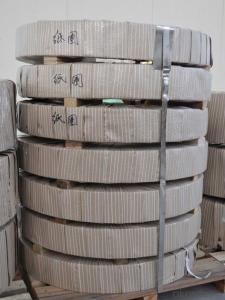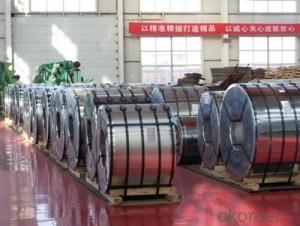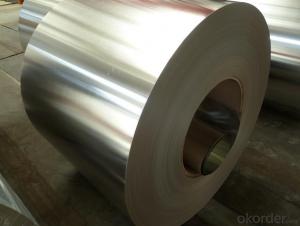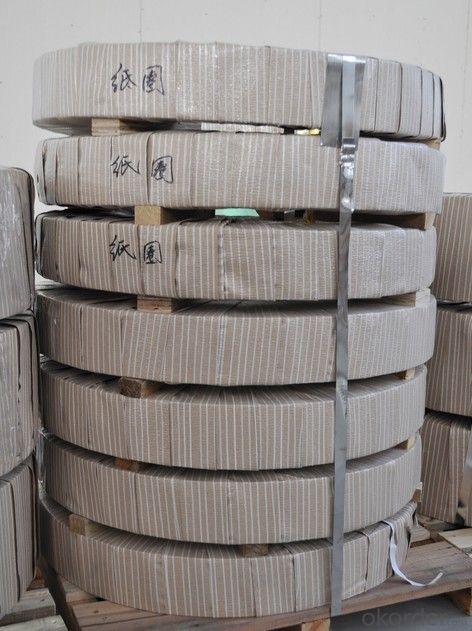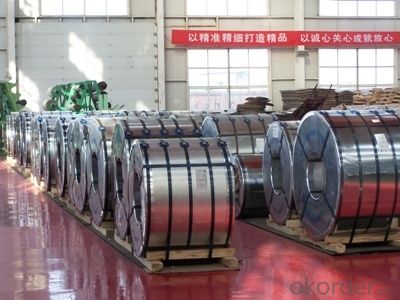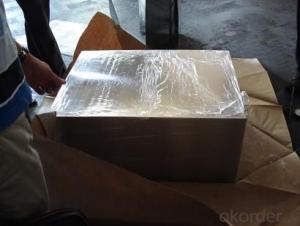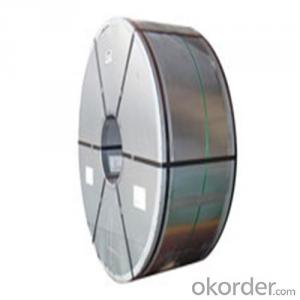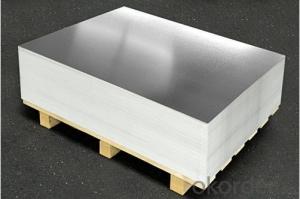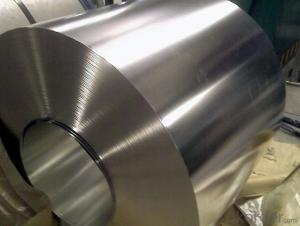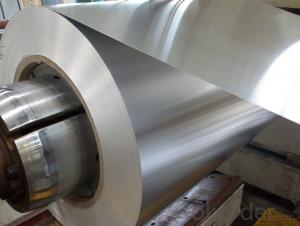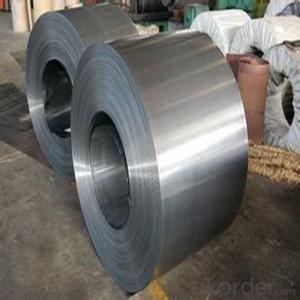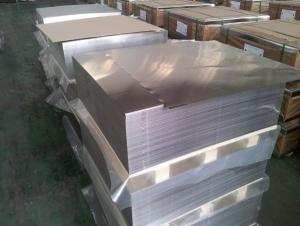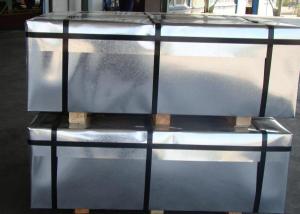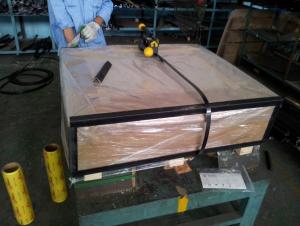Tinplate Sheets for Chemical Cans Use with 0.20mm thickness
- Loading Port:
- Shanghai
- Payment Terms:
- TT or LC
- Min Order Qty:
- 15 m.t.
- Supply Capability:
- 1000 m.t./month
OKorder Service Pledge
OKorder Financial Service
You Might Also Like
1.Structure of Tinplate Sheets for Chemical Cans Use with 0.20mm thickness Description
Tinplate Sheets for Food Cans Use with 0.20mm thickness is one of the metal packing materials, which is widely used for making painting cans ,chemical package cans , electrical cable ,battery and metal printing etc.
2. Main Features of the Tinplate Sheets for Chemical Cans Use with 0.20mm thickness
Steady and high quality
Fast shipment
Good experience for export work
For the surface, Plate uniform in thickness,uniform and smooth tin coating, without flaws,rusts,scratch,wave,nick of tin coating etc.
Thin Thickness
3.Tinplate Sheets for Chemical Cans Use with 0.20mm thickness Images
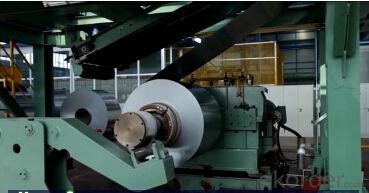
4. Tinplate Sheets for Chemical Cans Use with 0.20mm thicknessSpecification
Standard : GB2520-2000 ,JIS G3303
Steel type : SPCC
Coating : 2.8/2.8
Surface: Bright, Stone ,
Thickness:0.20
Width :600MM~1000MM
Temper : T1~T5
Package: tinplate wrapped completely with an inner cover of plastic or waterproof papers with vorners protected with metal angels.
5.FAQ of Tinplate Sheets for Chemical Cans Use with 0.20mm thickness
A. What is the package of tinplate? (Referred as below)
For sheets, thin plastic film + rust-proof paper + metallic cover + metallic angles+ steel band strips + fumigated wooden pallet.
For coil, thin plastic film + rust proof paper + metallic cover + steel band strips + fumigated wooden pallet
B. The surface of tinplate could you supply?
Stone finish, Bright finish, Matte finish, Silver finish
C. What is the tin coating you can produce?
We can produce E2.8/2.8,D2.8/5.6 and E5.6/5.6 etc.
D. Can you provide other thickness?
Yes, we can provide, normally 0.16mm-0.5mm.
- Q: How does tinplate withstand corrosion?
- Tinplate withstands corrosion due to the presence of a thin layer of tin coating on its surface. This tin layer acts as a barrier, preventing direct contact between the tinplate and the surrounding environment, thus protecting it from rust and corrosion.
- Q: How does tinplate packaging contribute to product convenience for consumers?
- Tinplate packaging contributes to product convenience for consumers in several ways. Firstly, tinplate packaging offers durability and strength, ensuring that the product remains intact during transportation and storage, reducing the chances of damage or spoilage. Additionally, tinplate packaging provides an effective barrier against air, moisture, and light, preserving the quality, freshness, and flavor of the product for longer periods. Tinplate containers are also easy to open and reseal, allowing consumers to access the product conveniently and maintain its freshness. Lastly, tinplate packaging is lightweight and easily stackable, making it space-efficient for storage and transportation, thereby enhancing convenience for both consumers and retailers.
- Q: What are the main differences between tinplate and tin-free steel?
- Tinplate is a thin steel sheet that is coated with a layer of tin, while tin-free steel is a type of steel that does not have a tin coating. The main difference between the two lies in their corrosion resistance and price. Tinplate offers excellent corrosion resistance due to its tin coating, making it ideal for packaging materials, such as food cans. On the other hand, tin-free steel may have lower corrosion resistance but is more affordable and commonly used in applications where corrosion resistance is not a primary concern, such as automotive parts or construction materials.
- Q: How is tinplate manufactured?
- Tinplate is manufactured through a process called electroplating, where a thin layer of tin is deposited onto a steel sheet. The steel sheet is first cleaned and then passed through an electrolyte bath containing tin salts. Electric current is then applied to the bath, causing the tin ions to be attracted to the steel sheet and form a uniform coating. This tin coating provides corrosion resistance and enhances the appearance of the steel sheet, making it suitable for various applications such as food cans and packaging materials.
- Q: What are the main factors influencing the consumer preferences for tinplate packaging?
- The main factors influencing consumer preferences for tinplate packaging include its recyclability and sustainability, durability and protective properties, aesthetic appeal and branding opportunities, as well as its ability to preserve product quality and freshness.
- Q: Can tinplate be used for musical instruments?
- Yes, tinplate can be used for musical instruments. Tinplate is often used in the construction of various musical instruments, such as harmonicas or tambourines, due to its durability, flexibility, and ability to produce unique sounds.
- Q: How does tinplate affect the environment?
- Tinplate can have both positive and negative impacts on the environment. On one hand, tinplate is a highly recyclable material, which helps reduce waste and conserve resources. It can be recycled multiple times without losing its quality, making it an environmentally friendly choice. On the other hand, the production of tinplate involves energy-intensive processes and can result in the emission of greenhouse gases. Additionally, the mining of tin, one of the main components of tinplate, can have adverse effects on ecosystems and local communities. Therefore, while tinplate offers recycling benefits, its production and sourcing should be done responsibly to minimize its environmental impact.
- Q: How is tinplate coated for construction materials?
- Tinplate is coated for construction materials through a process called electrolytic tinning. This involves immersing the steel sheet in an electrolyte bath and passing an electric current through it. The electric current causes tin ions to be reduced and deposited onto the steel surface, forming a thin layer of tin coating. This coating provides corrosion resistance and enhances the durability of the construction materials.
- Q: What are the different methods of sealing tinplate containers?
- There are several methods of sealing tinplate containers, including double seaming, soldering, welding, and using adhesive or pressure-sensitive seals. Each method offers its own advantages and is chosen based on factors such as the contents of the container, desired level of seal integrity, and production requirements.
- Q: How is tinplate corrosion resistant?
- Tinplate is corrosion resistant due to the thin layer of tin that is applied to its surface. Tin acts as a protective barrier, preventing the underlying iron or steel from coming into contact with moisture or oxygen, which are the main causes of corrosion.
Send your message to us
Tinplate Sheets for Chemical Cans Use with 0.20mm thickness
- Loading Port:
- Shanghai
- Payment Terms:
- TT or LC
- Min Order Qty:
- 15 m.t.
- Supply Capability:
- 1000 m.t./month
OKorder Service Pledge
OKorder Financial Service
Similar products
Hot products
Hot Searches
Related keywords
